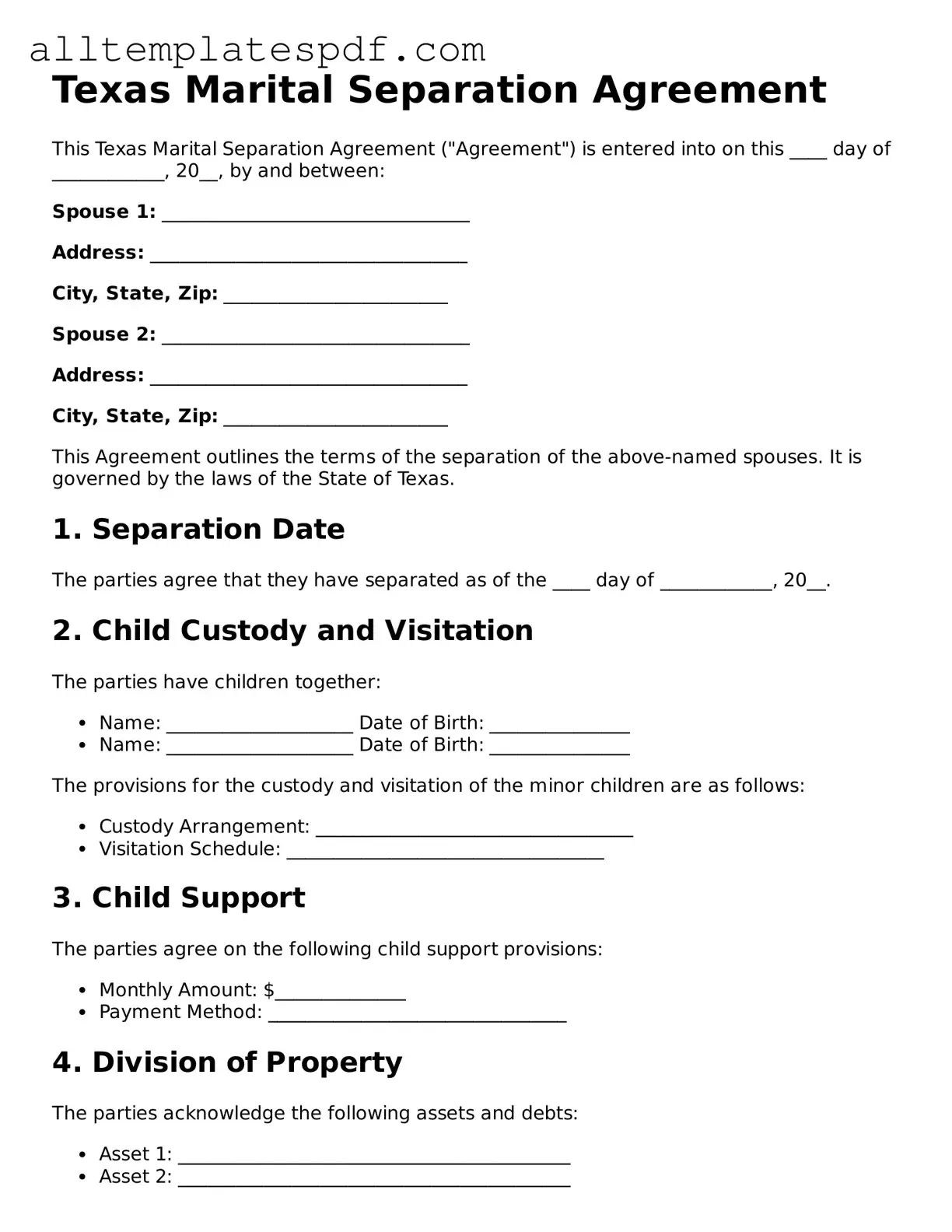When individuals decide to separate in Texas, they often turn to the Marital Separation Agreement form to outline the terms of their separation. However, several common mistakes can lead to complications down the line. Understanding these pitfalls can help ensure that the agreement is effective and legally sound.
One frequent mistake is failing to include all relevant details. People may overlook important aspects such as child custody arrangements, division of property, or spousal support. Each of these elements is crucial for a comprehensive agreement. Omitting any significant detail can lead to misunderstandings and disputes in the future.
Another common error involves not being specific enough in the terms outlined in the agreement. For instance, simply stating that property will be divided is insufficient. Instead, it is essential to specify which items belong to whom and how debts will be handled. Vague language can create confusion and may not hold up in court if disputes arise.
Many individuals also make the mistake of neglecting to address future changes. Life circumstances can change, and the agreement should account for potential modifications. Including clauses that allow for adjustments in custody or support arrangements can save both parties time and stress in the future.
Additionally, not having the agreement reviewed by a legal professional is a significant oversight. While it may seem straightforward, legal documents can be complex. A legal expert can provide valuable insights and ensure that the agreement complies with Texas laws, ultimately protecting the interests of both parties.
Another error is failing to consider tax implications of the separation. Certain decisions made in the agreement can affect tax liabilities. It’s important to understand how property division and spousal support may impact taxes to avoid unexpected financial burdens later on.
Lastly, not having both parties sign the agreement can render it unenforceable. Both individuals must agree to the terms and provide their signatures. Without this step, the agreement lacks legal validity, which could lead to significant issues if either party attempts to enforce the terms later.
Being aware of these common mistakes can help individuals navigate the process of filling out the Texas Marital Separation Agreement form more effectively. Taking the time to ensure accuracy and comprehensiveness can lead to a smoother transition during a challenging time.
